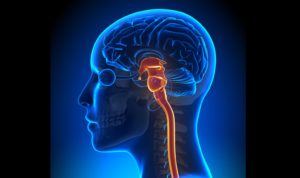
Neuron Research Opens Doors for Neuromorphic Computing

(decade3d-anatomy-online/Shutterstock)
Neuromorphic computing — which uses computational “neurons” to mimic the behavior of the human brain — could offer much greater efficiency in certain kinds of machine learning and robotics tasks. Understanding the brain itself is key to the development of neuromorphic computing — and, in particular, the relationship between how neurons fire in response to stimuli. Now, researchers from Japan (led by Tohru Ikeguchi from the Tokyo University of Science) have developed a model for reconstructing inputs from the neuronal response, paving the way for novel neuromorphic computing approaches.
Tens of billions of neurons fire when they receive signals from our senses, but our understanding of how neurons fire is largely limited to lab results. “Current artificial intelligence models cannot truly reproduce the information processing power of our brains,” Ikeguchi said. “This is because the neuron models used are too simplified and far from representative of the actual neurons in our brains.”
The team — which also included Ryota Nomura of Waseda University and Kantaro Fujiwara of the University of Tokyo — examined the data and developed a way to reverse engineer inputs from the neurons’ responses.
“We developed a method that uses a recurrence plot (RP). RP was originally introduced to characterize nonlinear dynamical systems since they contain multidimensional information, despite providing only two-dimensional visualization,” explained Ikeguchi. “Since neurons are nonlinear dynamical systems, we can hypothetically obtain information about a common input if we balance out the effects of neural dynamics.”
The method, called “superposed recurrence plot” (SRP), sums pixel values across multiple RP runs and then assigns a binary value based on whether the sum equals or exceeds 1. This method, when applied to a chaotic model of neuron firing, was able to reconstruct input signals. “When we select an adequate time period to calculate the firing rates of neurons,” Ikeguchi said, “we are able to reconstruct the input signal with fairly high accuracy.”
“Our research brings us one step closer to understanding how the information process happens within our brains,” Ikeguchi continued. “This could pave the way for novel neuromorphic computing devices.”
The research was published as “Superposed recurrence plots for reconstructing a common input applied to neurons” in the September 2022 issue of Physical Review E.
In the last few years, neuromorphic computing has seen high-level efforts from companies like Intel (read more here), with experimental chips already seeing use in applications like adaptive robotics, scene understanding, edge computing, and even artificial smelling tasks.






























